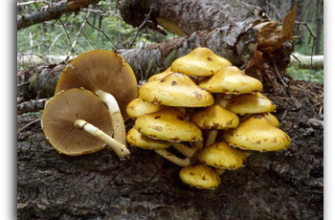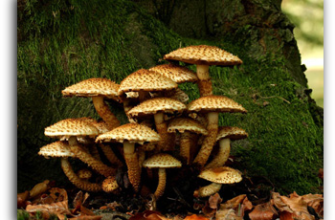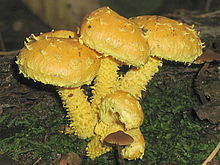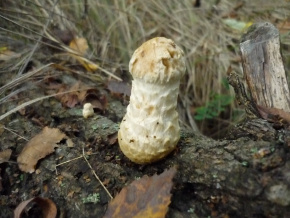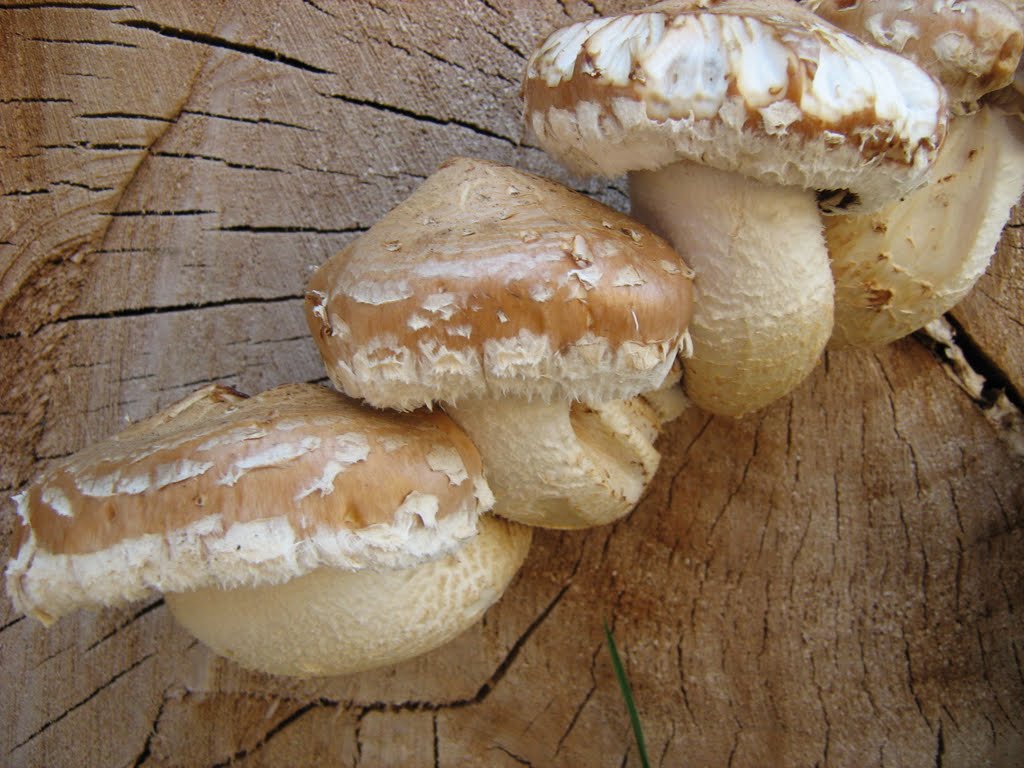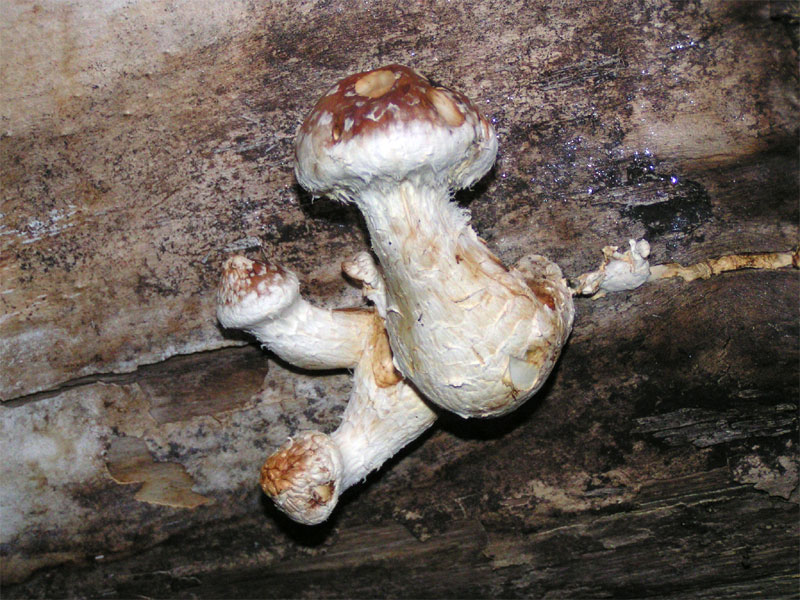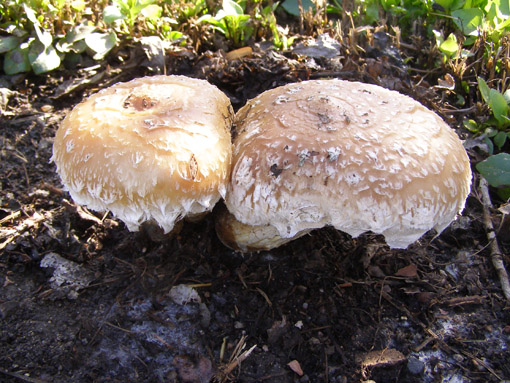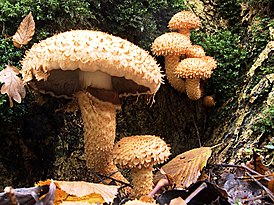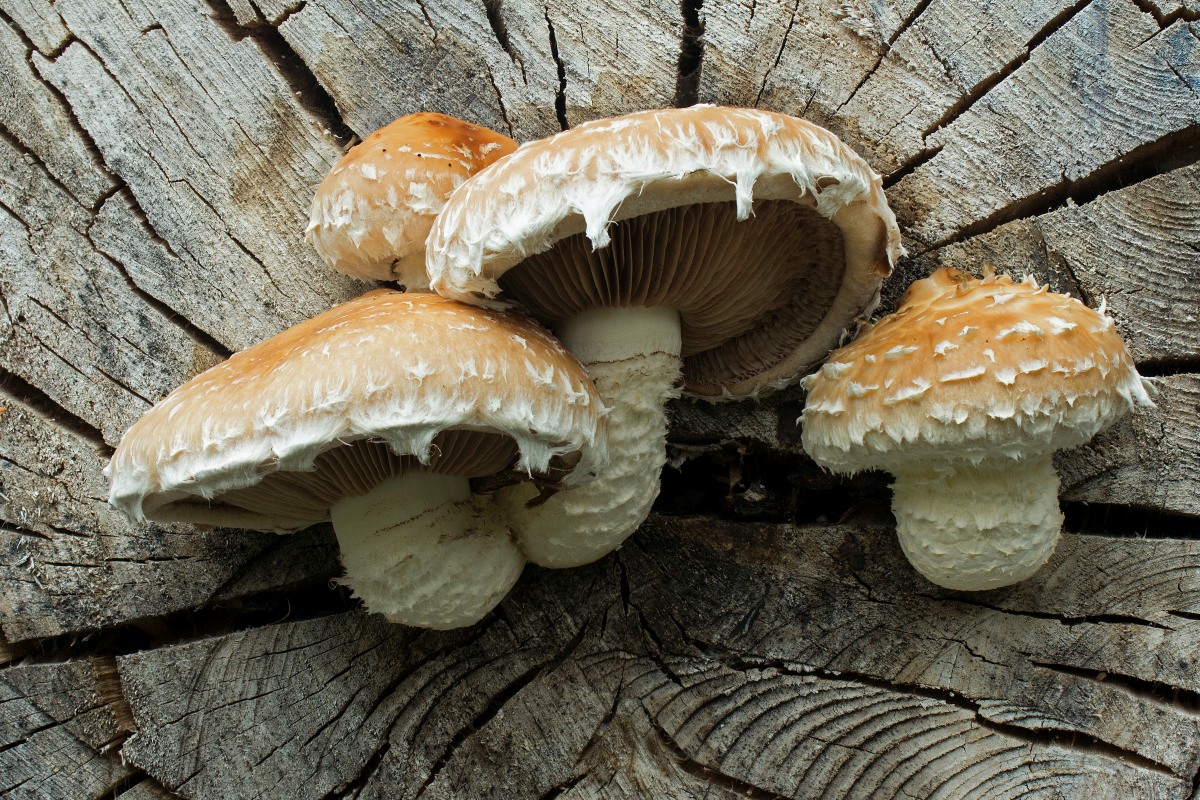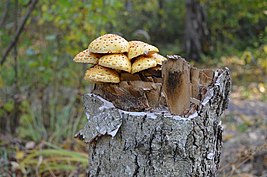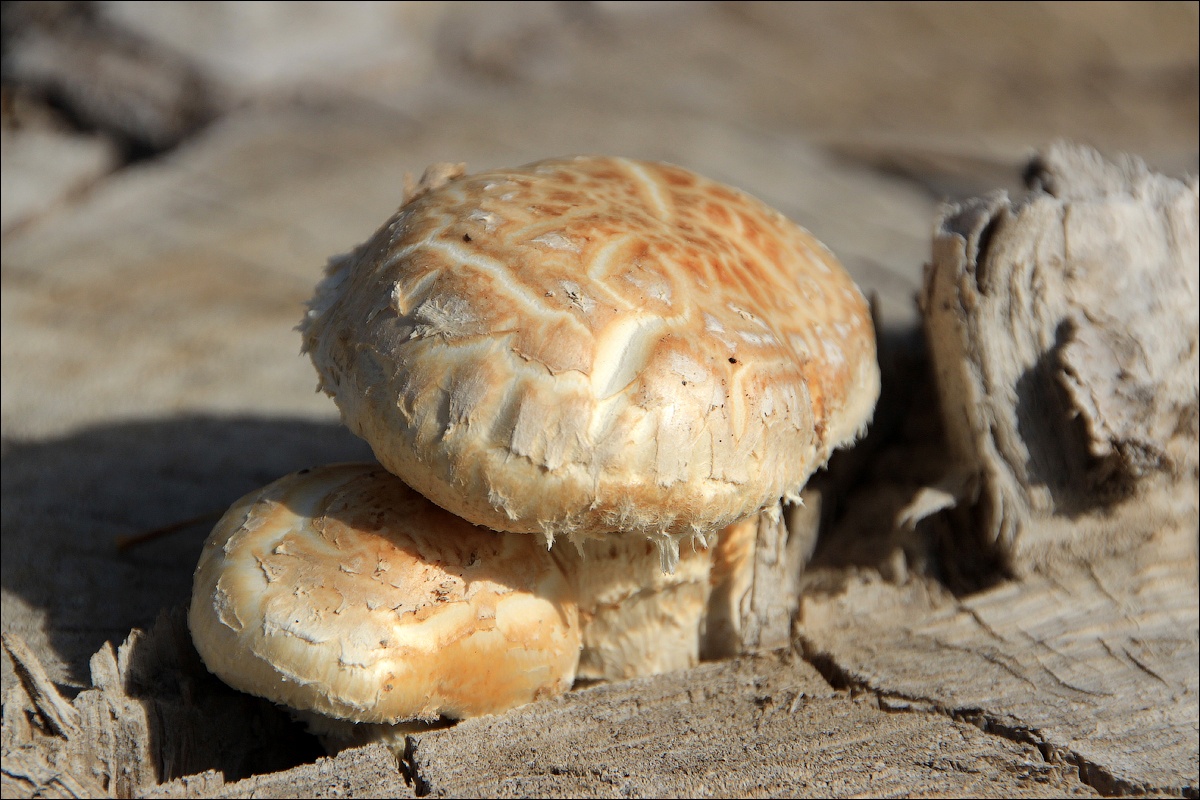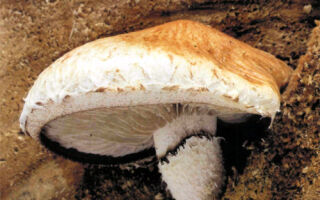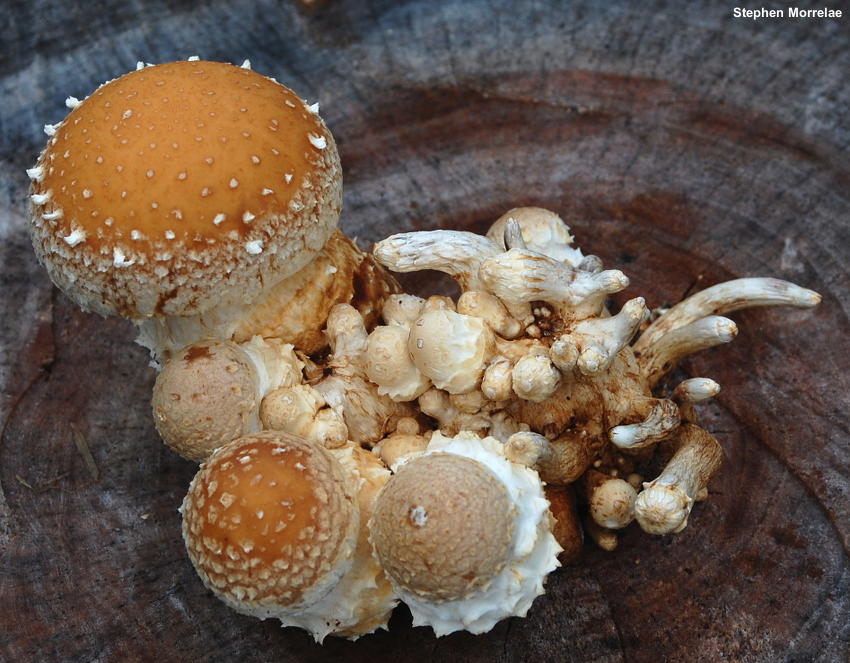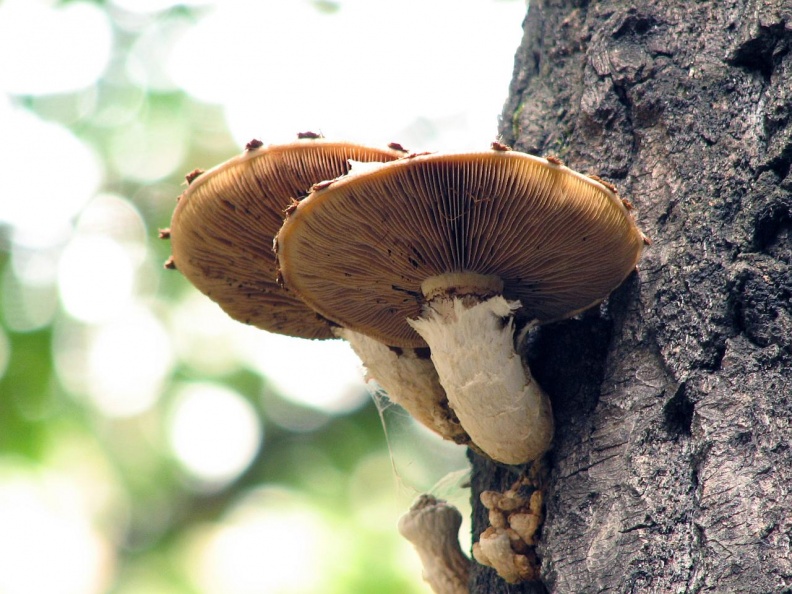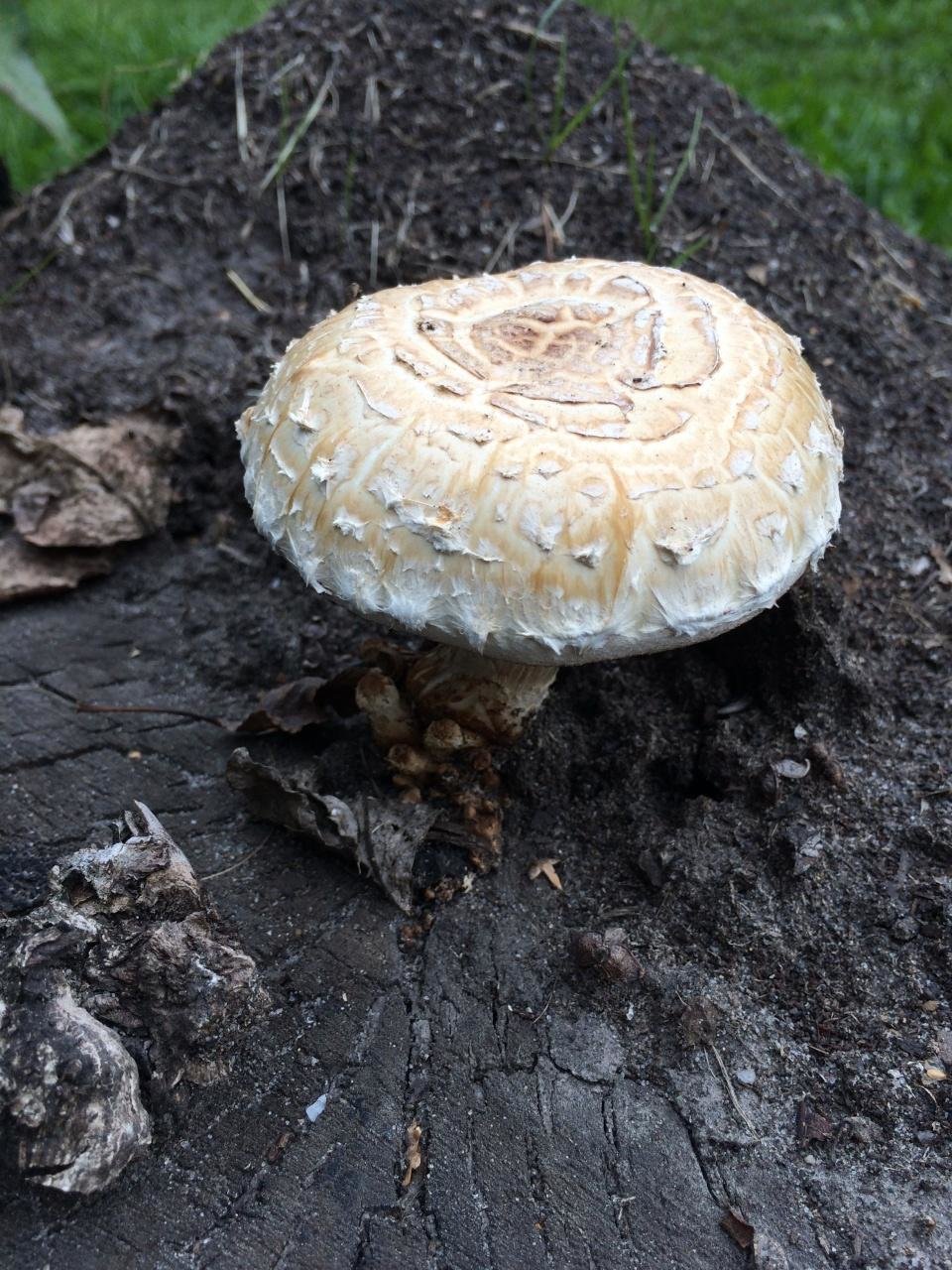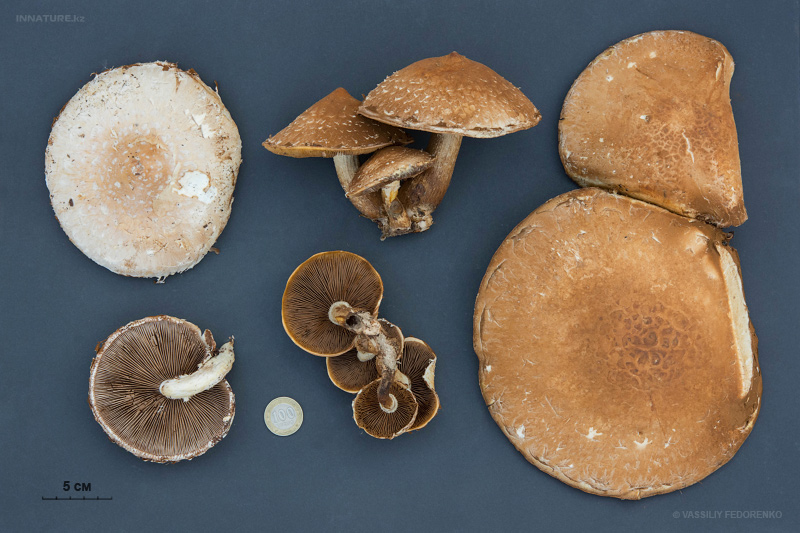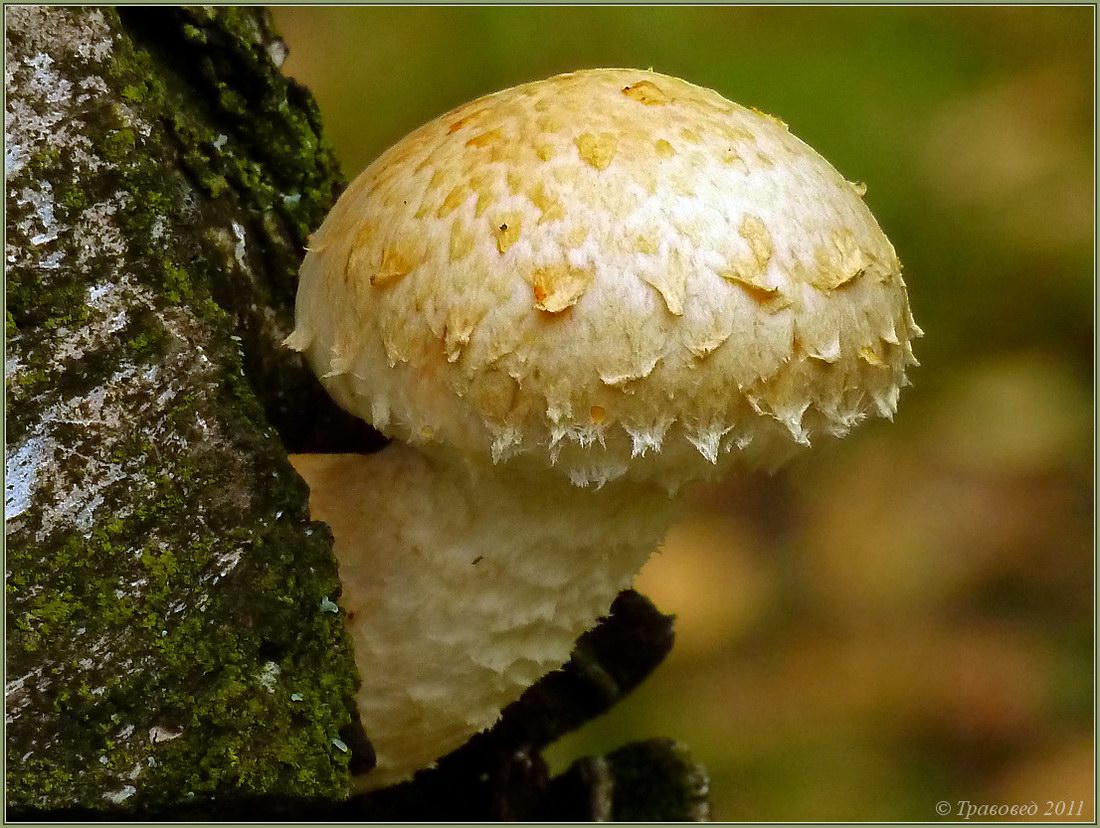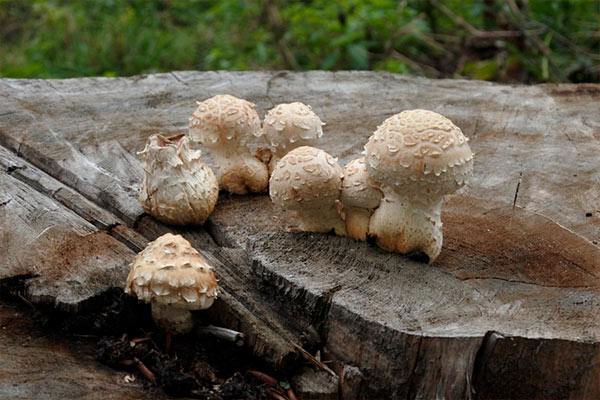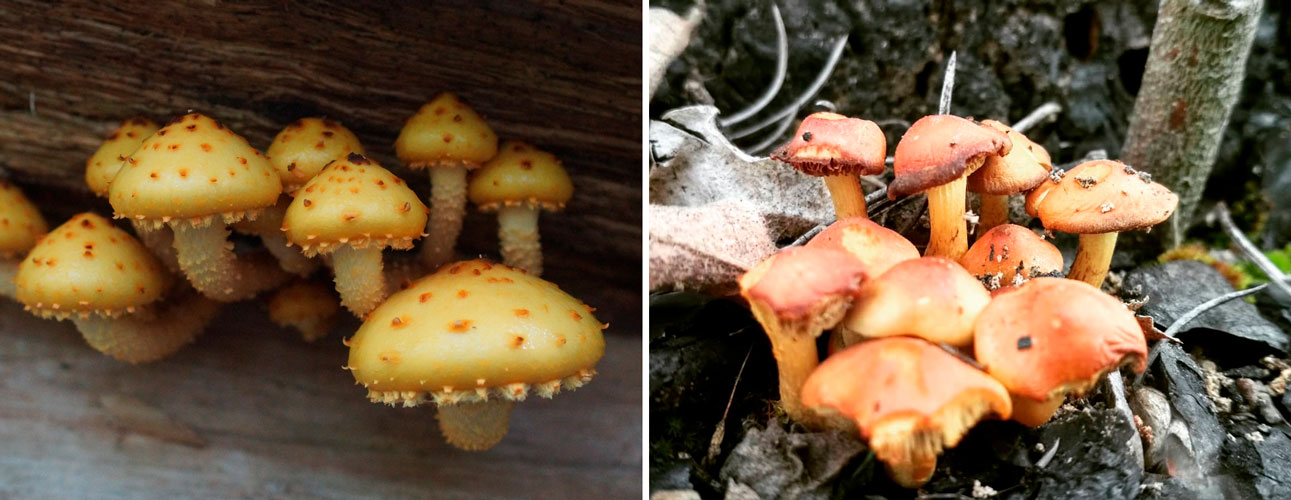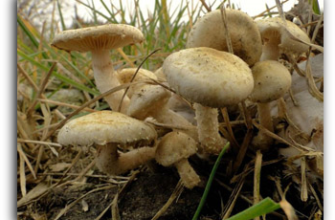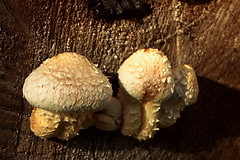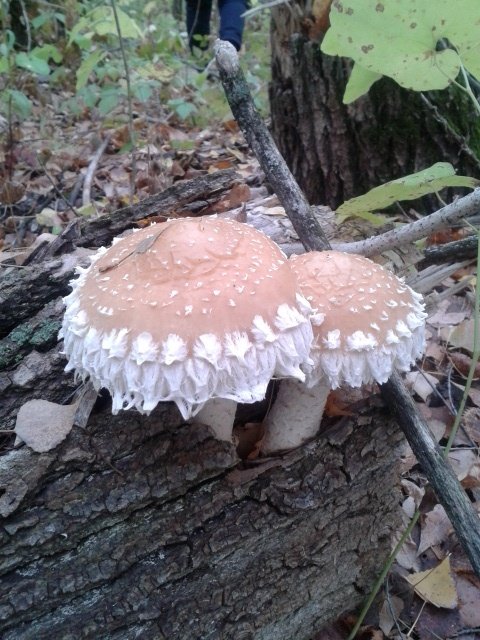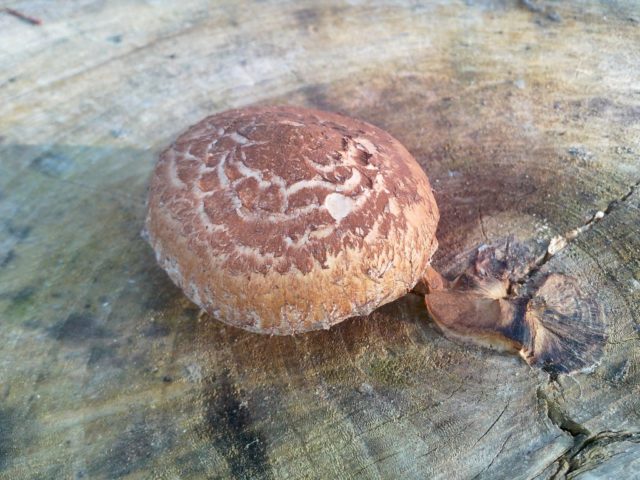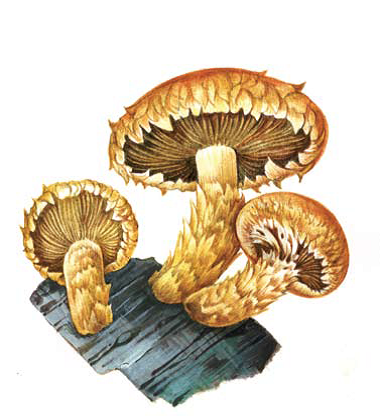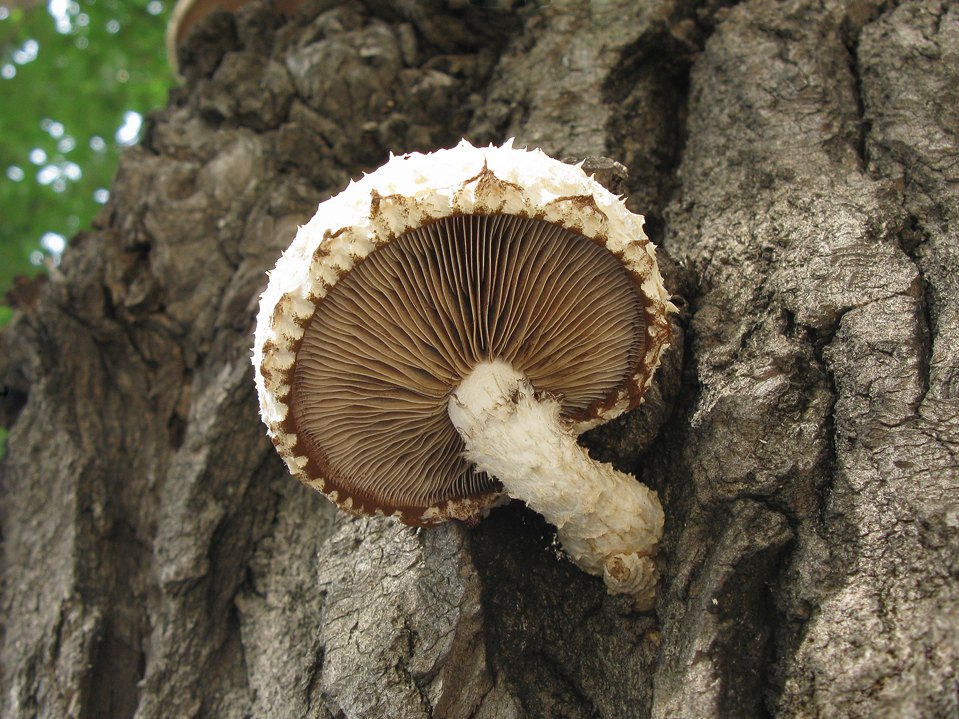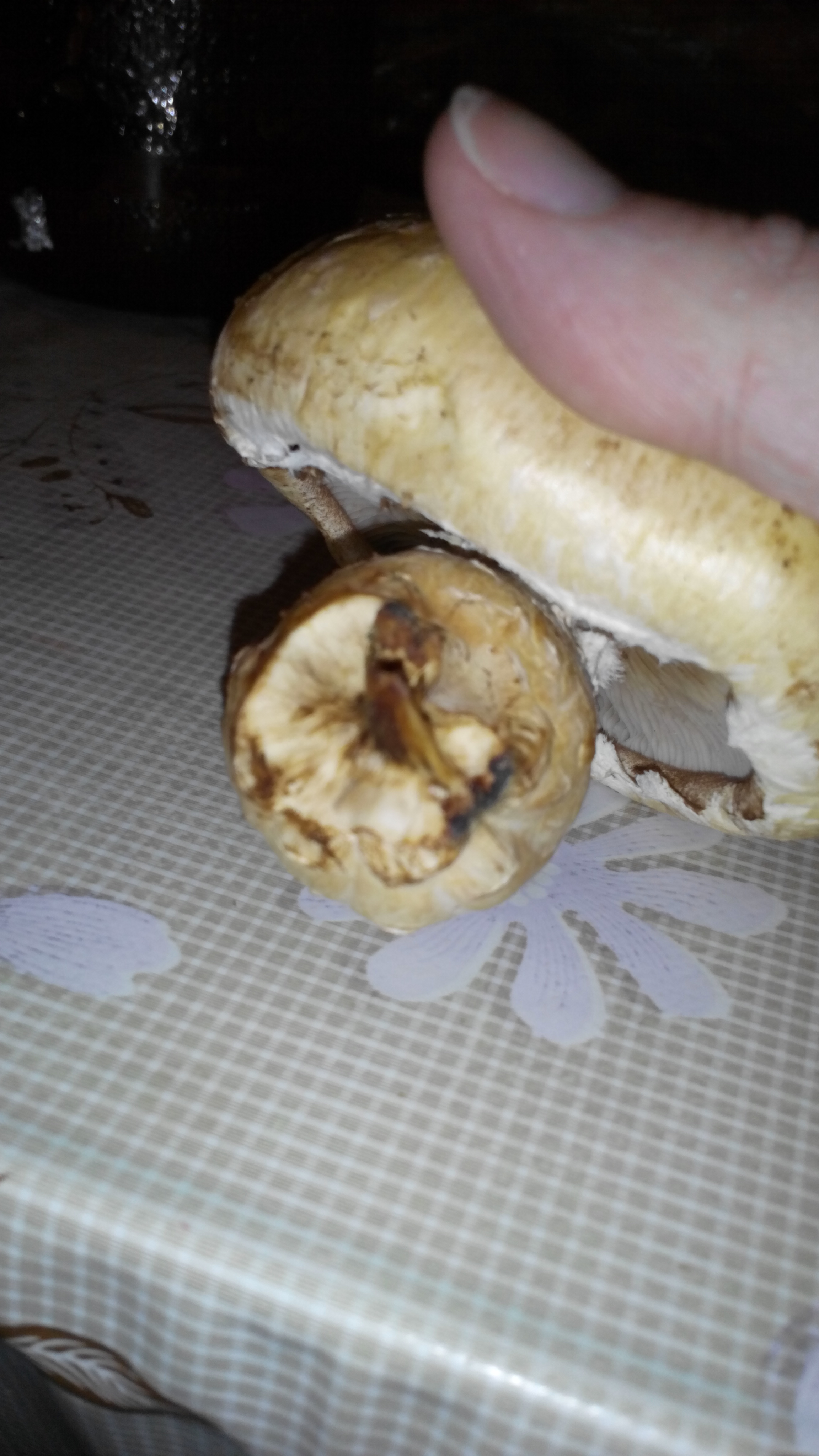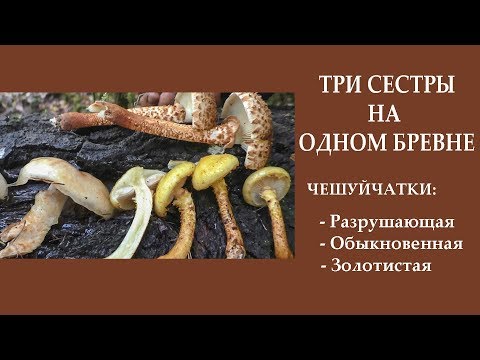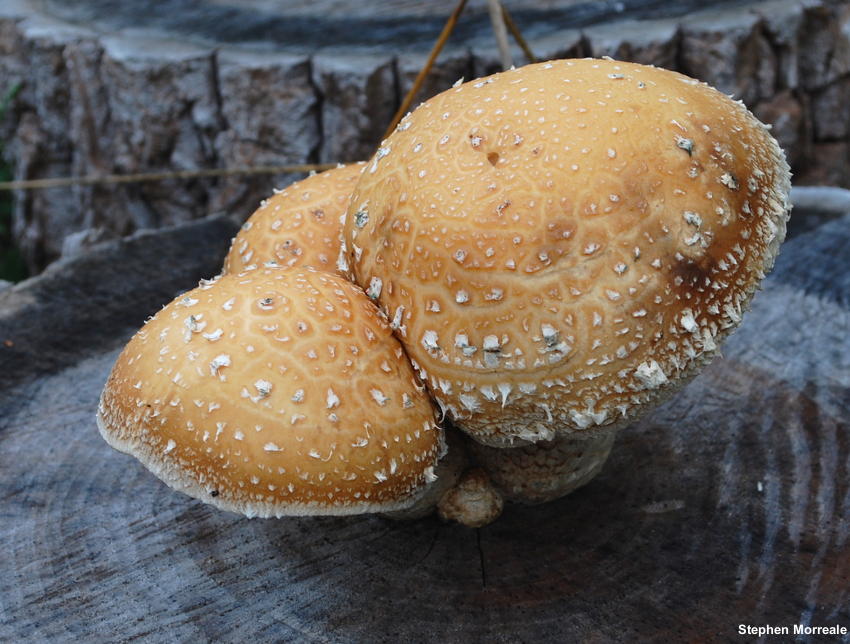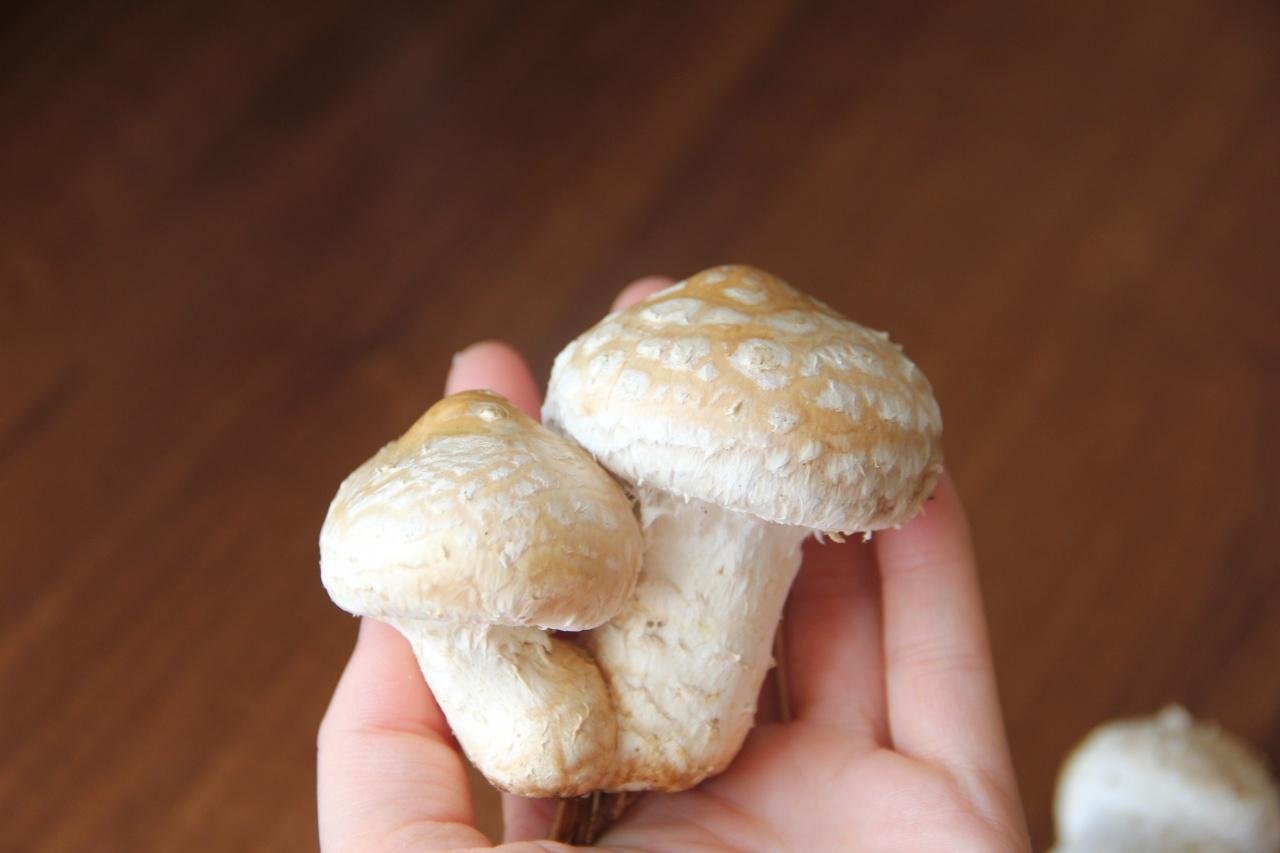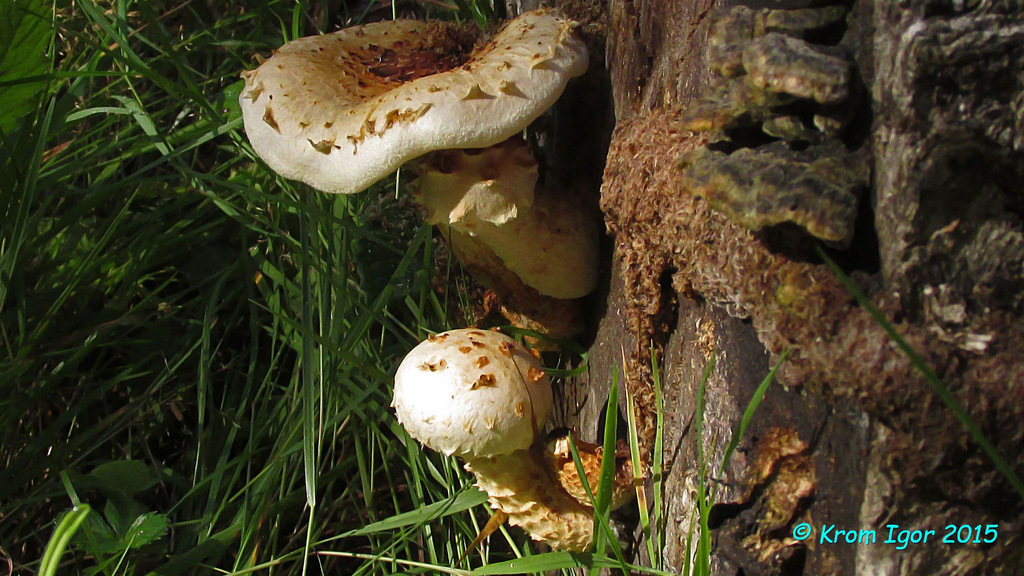Flame and early scales
Fire scale is an inedible lamellar mushroom that grows in groups from mid-July to late September.
The peak of fruiting is observed in August-September. Most often found on stumps and coniferous wood.
The cap of the fungus is at first hemispherical, and then convex-outstretched, with a diameter of about 10 cm. Its surface is dry and contains concentric zones composed of small scales. Colored bright yellow. The plates are narrow, adherent, first bright yellow, and then brown.
The leg is rounded, solid inside, about 8 cm high and about 1 cm in diameter. Above it is smooth, and below it is scaly. It is painted orange-yellow at the cap, and rusty closer to the base. The peduncle has a characteristic scaly ring. The flesh is thin, tender, soft in the cap, hard in the stem, yellow in color, with an unpleasant herring smell.
Flame scales are not dangerous to human health, but due to their low taste and unpleasant odor, they are not used for food.
Early scaly, or early agrocybe, is a rare conditionally edible lamellar mushroom that grows in groups from late May to mid-June. Places of distribution - forest edges, parks, vegetable gardens, rare shrubs, roadsides.
The cap of the mushroom is hemispherical, over time it becomes convex-outstretched with a small tubercle in the middle. Its diameter is about 8 cm. The surface of the cap is matte, dry, dirty yellow in color. By the end of the season, it burns out and becomes faded. Plates are frequent, adherent, white in young mushrooms, brownish-olive in mature ones. The leg is rounded, hollow inside, about 8 cm high and about 1 cm in diameter. Its surface is smooth, dry, dull, white pubescent at the base, painted white, which acquires a brownish tint in the lower part. The peduncle has a characteristic filmy ring. The pulp is thin, dense, white, with a pleasant mushroom aroma.
Early flakes are eaten after preliminary soaking or boiling. It can be fried and marinated.
Lumpy scaly, Pholiota tuberculosa
Hat: Relatively small (average diameter - 2-4 cm), develops from kidney-shaped to convex, pillow-shaped, with neatly tucked edges, on which the light remnants of a private veil remain for a long time; caps of mature mushrooms can fully open, retaining only a blunt tubercle in the central part, and then the edges lose their regularity. The color is yellow-orange, usually darker in the center, the dry surface is densely covered with small felt scales of the same color, pressed against the cap. The flesh of the cap is thin, yellowish, odorless and somewhat bitter in taste.
Hymenophore: Plates, in young mushrooms covered with a private veil, free or narrowly accreted, of medium frequency, are interspersed with small plates. The color of the plates is initially light, almost white; with age, it gradually darkens to yellow-brown; in mature scales, the plates are often covered with small rusty-brown specks.
Spore powder: Ocher brown.
Leg: Relatively short and thin (1.5 - 3.5 cm in length, not more than 0.5 mm in thickness), cylindrical, often curved, densely pubescent at the point of attachment to the substrate. The ring remaining from the private bedspread quickly disappears, leaving faint strokes and bracelets of a darker color on the surface of the leg. The leg is painted in the color of the cap, in the upper part (above the former ring) it is somewhat lighter, the surface is also covered with velvety scales. The flesh of the leg is tough, fibrous, dark at the base, yellow above.
Spreading: Lumpy scales are found rather infrequently and sparingly from mid-summer to the end of September, preferring well-decomposed remains of deciduous trees - birch, linden, aspen and others. Due to the fact that Pholiota tuberculosa can be easily confused with small specimens of many other scales, the data on the distribution of this fungus in a particular area need to be clarified.
Similar species: Serious sources indicate Pholiota tuberculosa luminous scale (Pholiota lucifera) as a twin, but it is distinguished by a sticky surface and pressed scales. At the amateur level, lumpy flakes are much easier to confuse with fiery flakes (Pholiota flammans), but those scales on the cap and stalk bulge very strongly, and it grows only on conifers.
Edibility: Like many bitter flakes, Pholiota tuberculosa is edible for those who love and know how to cook it. In other cases, it is indicated as a mushroom of low nutritional value, functionally equivalent to inedible.
Author's notes: For several decades I have not been able to make out the old rotten shed in the middle of the site, I don't even know which side to approach from. I decided to consult with mushrooms. Now I purposefully drag mushroom material from the forest. With the shed, some polypores, mycenae with tubaria are already actively helping me (well, there is little sense in these), I still keep my dream of acclimatizing the killer saw leaf, I have been waiting for oyster mushrooms from year to year. Well, the lumpy flake grew by itself, without waiting for a special invitation. I believe that another twenty years will pass - and the ugly pile of rotten logs and boards in the middle of the site itself, without human intervention, will be processed into useful and peaceful compost. I believe in the victorious power of the mushroom.
These I caught on a log rolled out of the wall of an old barn. I wonder what kind of rot they cause - brown or white? And by the way, which one is better?
Lumpy scales cannot be called an exquisite decoration of the forest, but in the gloom and dampness, among the ancient lindens and oaks, each bright spot adds optimism. Others say that the locals sometimes collect it together with the honey mushroom, of which there are sometimes whole mountains, and then they complain - the current honey mushrooms are bitter.
Scaly inedible
The overwhelming majority of species of the genus scaly are inedible mushrooms, although not all of them are truly poisonous. Nevertheless, we consider it appropriate to give a brief description of one of the inedible flakes.
While most of the non-edible mushrooms in this family gained their status only because of their bitter taste, alder flake also has a slight toxic effect, which makes it really dangerous.
We could not find a detailed description of the effect produced on the human body when using this mushroom, but it is widely noted that alder can cause food poisoning. Fortunately, even if you pick these mushrooms by mistake, they can be immediately identified by their unpleasant bitter taste.
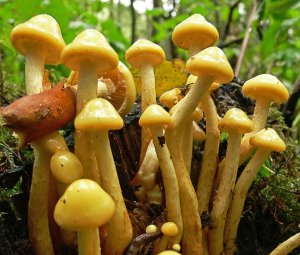
However, it is still better to determine the species of mushrooms not in the plate, but in the forest. Well, for this, it is better to carefully study the description and photo of alder flakes. The problem here is that this mushroom is often well, very similar to ordinary mushrooms, which misleads inexperienced mushroom pickers.
It should be noted right away that alder scales are not at all similar to other scales, since the scales themselves are extremely poorly visible on it. The cap is small, up to 6 cm in diameter. The length of the stem is usually slightly longer than the diameter of the cap. The color of the cap is from lemon yellow to pale brown, the stem is either the same color or darker.
Grows in dense groups from late August to cold weather. Prefers deciduous forests, especially felled alder and birch trunks. Alder scales never grow next to conifers.
Scaly - photo and description
A typical representative of the genus is fleecy or common scaly, according to which a general description of the fungi of this family is made. All other species are determined by their differences from it.
All scales are characterized by a hat-toed body shape. Almost all of them are medium to large lamellar mushrooms.
The hat has the shape of a hemisphere or a bell; in old mushrooms it is flat-spread. The surface can be either dry or slimy, almost always covered with dense, well-visible scales.
The leg tends to the shape of a cylinder, and is also often covered with scales. In most species, the stem is very fibrous and tough, which is why, even in edible mushrooms, it is not used for food.

Now let's take a look at what edible mushrooms of this genus look like:
- The scales are golden. Medium-sized mushroom. The hat is on average 10-12 cm, the color is bright yellow, sometimes with a shade of greenish. The leg is long (up to 10 cm) and clearly visible. Usually the same color as the hat, or lighter. If the mushroom grows from a vertical tree trunk, the stem will be curved. The scales are slightly or much darker than the mushroom itself. Grows in dense clusters on dead deciduous wood, sometimes on diseased but living trees.
- Edible flakes, or hint of honey agaric. Small mushrooms that look very much like honey mushrooms. The size of the cap rarely exceeds 4-5 cm, but the legs are quite long (8-10 cm). The color of the caps is light brown, the legs are always noticeably lighter. The caps are covered with a layer of mucus with barely visible scales. Like mushrooms, these mushrooms also grow in large "families" on stumps and dead woods of broad-leaved species.
- Boron flakes. The size of the cap rarely exceeds 7-8 cm in diameter. Color from golden yellow to ocher brown. The edges of the cap and the leg (up to 8 cm in length) are always slightly lighter. Grows in small clusters on a pine litter next to roots or trunk, sometimes found on dead wood and stumps.
- Scale is common, or fleecy. Medium-sized mushroom. The diameter of the cap is usually 10-12 cm, although sometimes it can reach 20 cm. The stem, depending on the growing conditions, can reach 5 to 20 cm in length. Also completely covered with scales. A fairly widespread mushroom that grows on any wood (live, dead, deciduous, coniferous).
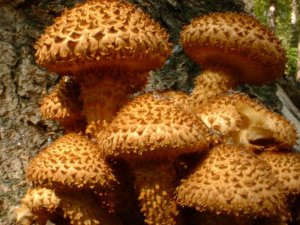
Types of scales
The genus of flakes has about 150 species, of which about 30 grow in the forests of Russia. The most common types are foliots: ordinary, golden, fiery, cinder, alder, gum-bearing, destructive, edible (hint).
Common scaly
This is the most common type. Mushrooms of this type are also called fleecy, scaly, dry. They grow in colonies on the wood of living and rotten deciduous trees. The hats have a diameter of 6-10 cm, in young ones they are hemispherical, in mature ones they are flat. The surface of the caps is pale yellow with pronounced orange-brown scales.
The leg is cylindrical, dense, rusty. Young specimens have a private veil that breaks when ripe, forming a ring on their stem and flakes around the edges of the cap.
The flesh of this species is fleshy, white or yellow, although edible, but tastes bitter.
Scale golden (royal honey mushrooms)
The golden species is one of the largest representatives of the foliot: the diameter of the cap can reach 18 cm. Their fruit bodies are painted in bright yellow, golden color. The surface of the cap is covered with mucus and small dark brown scales. In young specimens, the cap has a hemispherical shape with tucked edges; in adulthood, it is a saucer shape with a convex center.
Flame scale
This is an inedible type of foliot. Mushrooms of this species are smaller than ordinary or golden ones: the diameter of the caps does not exceed 7 cm. The caps are painted in reddish tones and are covered with thick curled scales of a lighter color than the cap. The scales on the cap form a pattern of ovals.The pulp is fleshy, hard, yellow in color, when broken, it becomes brown, has an astringent bitter taste and an unpleasant odor, therefore it is not eaten. Fruiting from mid-July to late September.
Cinder flakes
Cinder flakes are also called coal-loving ones. The caps of this type of mushroom are often stained with soot and dirt, since burnt trees and fireplaces are their favorite places of growth. Soot, dust and dirt adhere to the mucous surface of the caps, so the mushrooms quickly turn dirty yellow or dirty brown. In young foliots, the caps are covered with a private veil; in mature foliots, the remains of this veil are preserved in the form of a ring on the stem and along the edges of the cap. The legs are covered with small reddish scales. The pulp of these foliots is dense, tough, light yellow, and has no specific taste or smell. There is no information on the edibility of these mushrooms in the literature. They grow from August to October.
Alder flakes
These foliots are also called the alder moth. They are often found on stumps and wood of alder or birch. The size of the caps of the moth is small: it does not exceed 5-6 cm. The color of the caps is yellow-orange, along their edge there are flaky remnants of a private bedspread. The legs are curved, have a pronounced ring. Below the rings are fibrous, above the rings are smooth.
The pulp of the mushrooms is yellowish, dirty yellow, inedible. When eaten, moths can cause poisoning. Fruiting in August-September.
Scaly gummy
These mushrooms are also called yellow-green because their fruiting bodies, covered with scales, are light yellow to yellow-green in color. The diameter of the caps of gum-bearing foliots is 3-6 cm. The pulp is edible, since it does not have a rare taste and odor specific to scales.
Destructive scales
These mushrooms are often found on old and dry poplars, therefore their second name is poplar or poplar foliot. During their growth, these fungi actively destroy the wood of the tree. Caps can reach 20 cm, are light brown or yellowish, covered with white scales. Legs are thinned towards the top, have bulges at the base. The legs are the same color as the caps and are also covered with scales.
Edible flakes
This type of foliot is industrial. Mushrooms of this species are cultivated on a large scale in Japan and China. Their second name is foliot or hint of honey. Grown in rooms with high humidity - 90-95%. They grow in groups. The sizes of these mushrooms are small - no more than 2 cm in diameter. The color of the fruit bodies is orange-brown, the surface is covered with thick dense jelly-like mucus.
They have soft pulp, similar in taste and smell to real honey mushrooms. On the shelves of our stores, you can often find pickled edible flakes of Chinese production. Only the inscription on the bank says that it is mushrooms (the second name for edible scales). Pickled foliots differ from real honey mushrooms in a slimy marinade, which is due to the jelly-like coating of the caps of the latter.
Poplar scaly (Hemipholiota populnea)

Current title
| Index Fungorum | Hemipholiota populnea (Pers.) Bon | |
| MycoBank | Pholiota populnea (Persoon) Kuyper & Tjallingii-Beukers |
Systematic position
Etymology of the species epithet
Synonyms
- Agaricus populneus Pers., Mycol. eur. (Erlanga) 3: 171 (1828)
- Pholiota populnea (Pers.) Kuyper & Tjall.-Beuk., Persoonia 13 (1): 81 (1986)
- Pholiota destruens (Brond.) Gillet, Hyménomycètes (Alençon): 442 (1876)
- Dryophila destruens (Brond.) Quél., Enchir. fung. (Paris): 67 (1886)
- Myxocybe destruens (Brond.) R. Heim, Champignons d'Europe (Paris) 2: 387 (1957)
- Hemipholiota destruens (Brond.) Romagn., Bull. trimest. Soc. mycol. Fr. 96 (3): 250 (1980)
- Hemipholiota comosa (Fr.) Bon, Z. Mykol. 60 (1): 71 (1994)
Habit
Fruit body: Cap and stem (agaricoid)
Hymenophore: Lamellar (including folded or with rudimentary plates)
Hat
The hat (6) is 8 - 16 (20) cm in diameter, at first it is hemispherical with the edges turned inward, then it opens up to extended with a tubercle in the center. The surface is viscous, sticky, with large white fibrous scales, which can disappear over time. The color of the cap in young fruit bodies is white, yellowish-white; when ripe, it darkens to red-yellow, brown.
The plates are adherent with a tooth, wide, grayish-white, in mature ones they darken to brown, in unopened fruiting bodies they are covered with a white felt private veil.
Leg
The stem is central or eccentric, 5 - 12 (18) cm long, 1 - 3 cm in diameter, curved, thickening downwards, stiff, solid.In young fruit bodies it is white, beige, with large white scales and a flaky ring, then darkens, starting from the base, where it can become almost black with age, the scales and ring are less noticeable or disappear.
Pulp
The flesh is firm, from whitish at the cap to yellow-brown at the base of the stem. The taste is unpleasant, bitter.
Microscopy
Dark brown spore powder.
Spores 7.5 - 9.5 (10.0) × 5.5 - 6.0 μm, Q = 1.4 - 1.9, ellipsoidal, oval, with a small pore of germination.
Basidia 20 - 30 × 6.0 - 9.0 μm, 4-spore, with a buckle at the base.
Heiloleptocystids 20 - 30 × 4 - 10 μm, cylindrical, narrow-headed, thin-walled, colorless.
Pileipellis consists of colorless cylindrical hyphae 3 - 10 µm in diameter, located in the gelatinous layer, under which there are thicker elements 6 - 17 µm in diameter with brown pigment in the walls.
Ecology and distribution
It grows on living and dead wood of deciduous trees, prefers poplar (Populus), but is also noted on alder (Alnus), birch (Betula), apple (Malus), willow (Salix). It can be found very high on living trees.
Fruiting
The divisions correspond to the decades of the month.
Nutritional properties
Conservation status
- Red Data Book of the Ulyanovsk Region 2004. A species with a decreasing number and limited prevalence in the Ulyanovsk Region. It is necessary to preserve mixed forests and further study the distribution.
- Red Data Book of the Chukotka Autonomous Okrug 2008. A rare species at the northeastern limit of the ruptured area. It is necessary to preserve existing and find new habitats.
Similar species
Deviating scales (Hemipholiota heteroclita) - differs in a lighter color of the cap (light yellow, yellow-ocher) and a pleasant fruity pulp smell.
Distribution in Western Siberia
Novosibirsk region: env. Novosibirsk Academgorodok (Ageev D.V.).
Altai Territory: env. Settlement Talmenka, floodplain of the Chumysh River (Ageev D.V.).
Related materials
- Red Data Book of the Ulyanovsk Region Volume 1. (Mushrooms, animals). / Administration of the Ulyanovsk region. - Ulyanovsk: UlSU, 2004 .-- 288 p. - S. 45.
- Red Data Book of the Chukotka Autonomous Okrug Volume 2. (Plants). / Ed. Chereshneva I. A., - Magadan: "Wild North", 2008. - 224 p. - S. 191.
- Smith A. H., Hesler L. R. The North American species of Pholiota. - New York - London: Hafner Publishing Company, 1968 .-- 402 p. - P. 124-125.
- Bas C., Kuyper Th. W., Noordeloos M. E., Vellinga E. C. Flora Agaricina Neerlandica. Critical monographs on families of agarics and boleti occurring in the Netherlands. Vol. 4. Strophariaceae, Tricholomataceae. - Rotterdam - Brookfield: A. A. Balkema, 1999 .-- 190 p. - P. 98.
- Sazanova N.A. Anadyr. // Mycology and phytopathology. - 1993. - T. 27 (3). - S. 7-16.
- Beglyanova M.I.Flora of agaric fungi in the southern part of the Krasnoyarsk Territory. Part 1. (Textbook) - Krasnoyarsk, 1972 .-- 207 p. - S. 139.
Link to this page for prints

